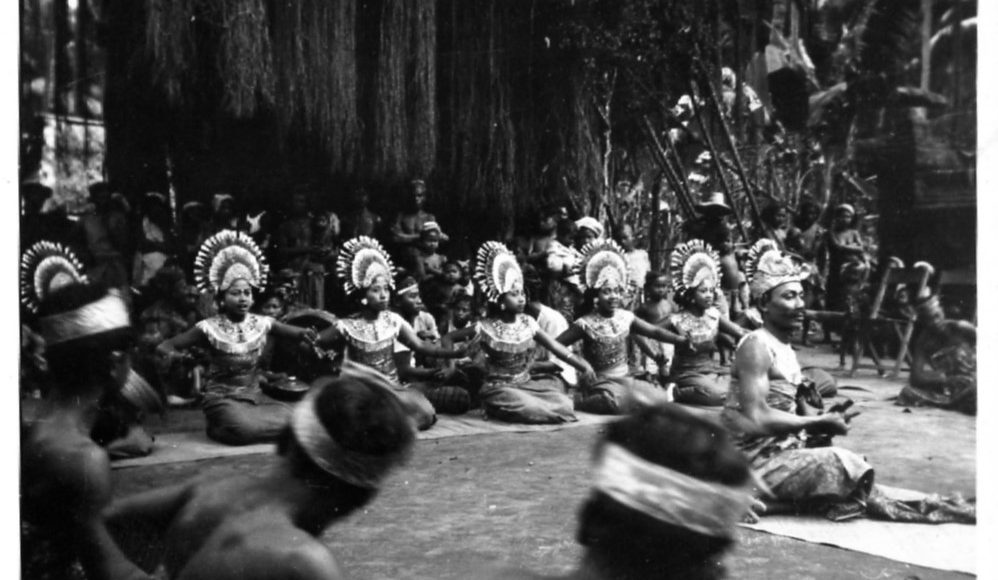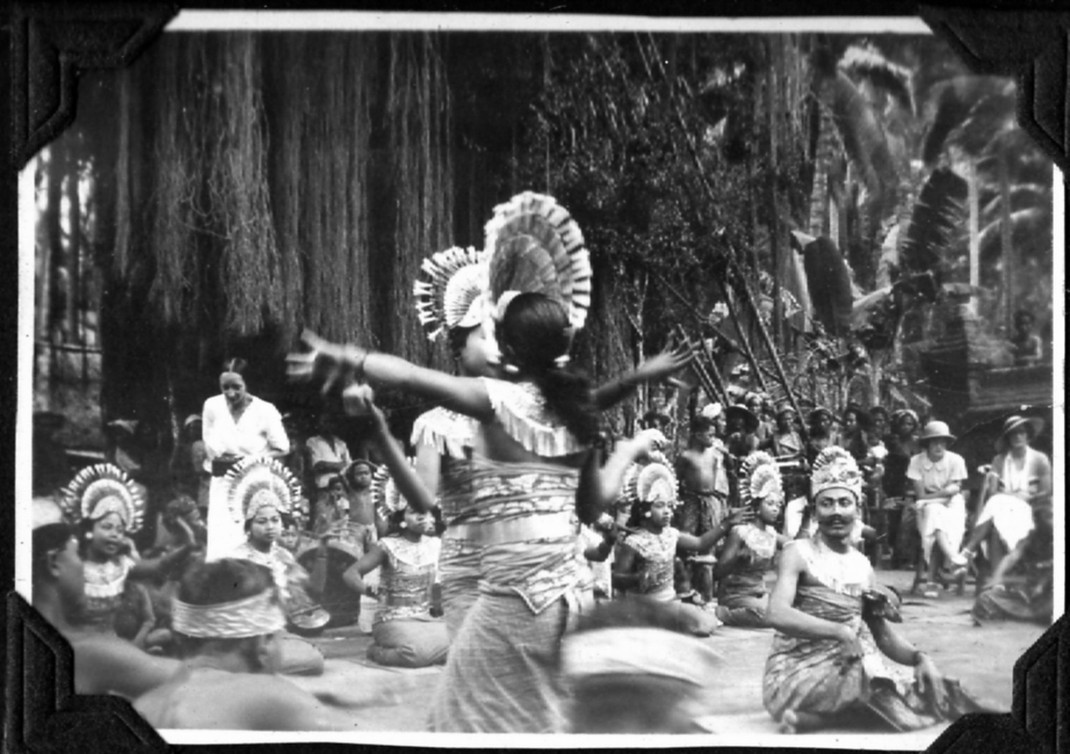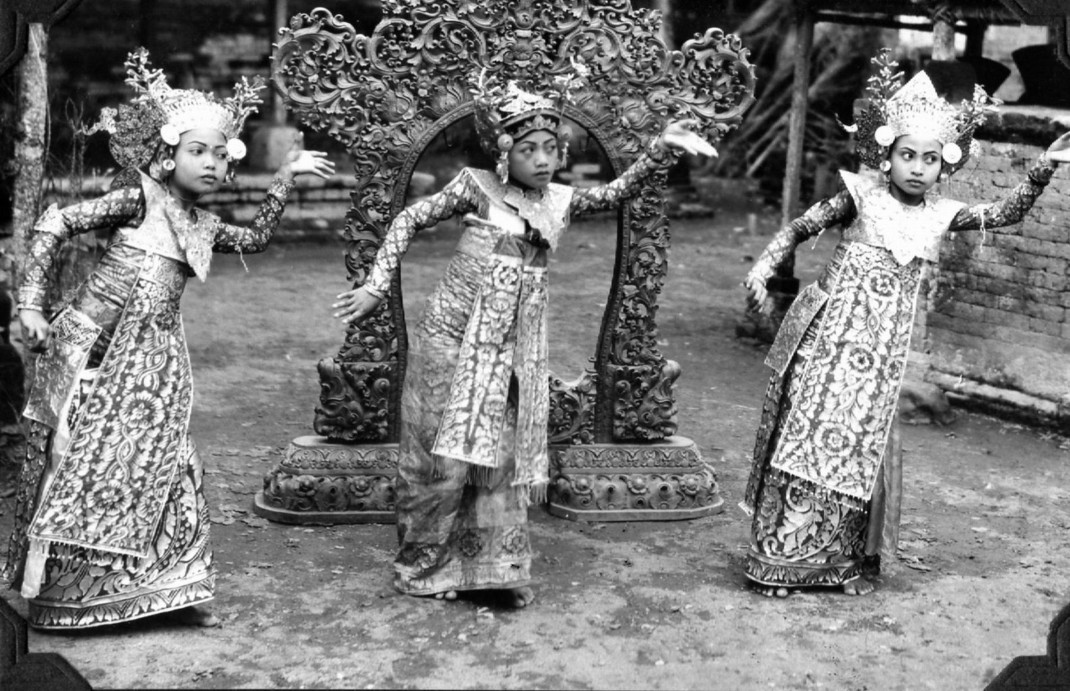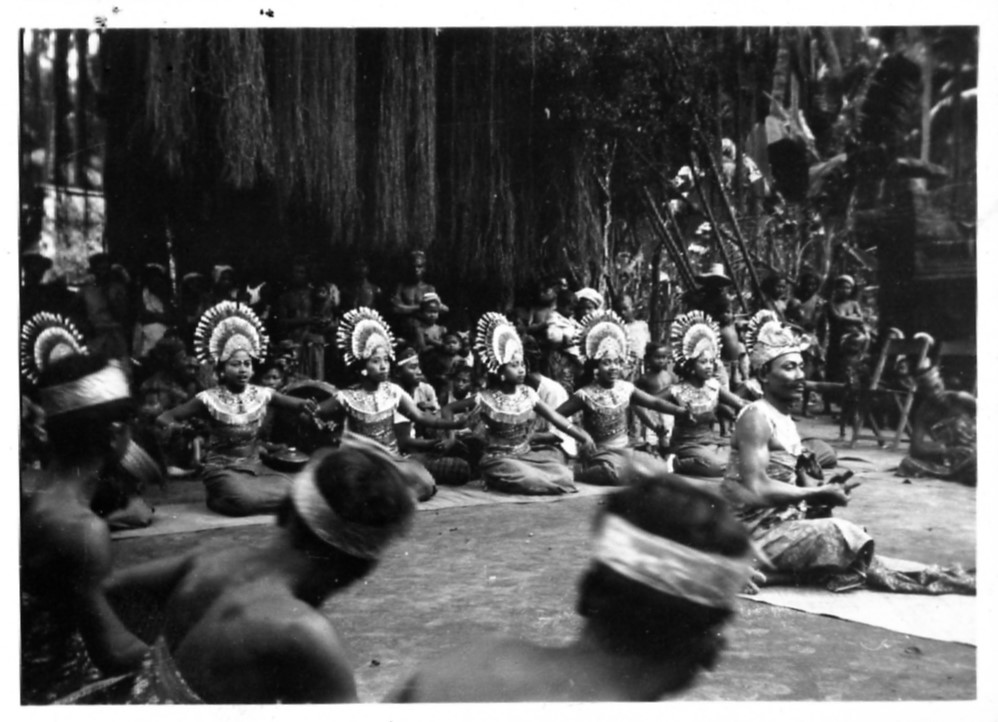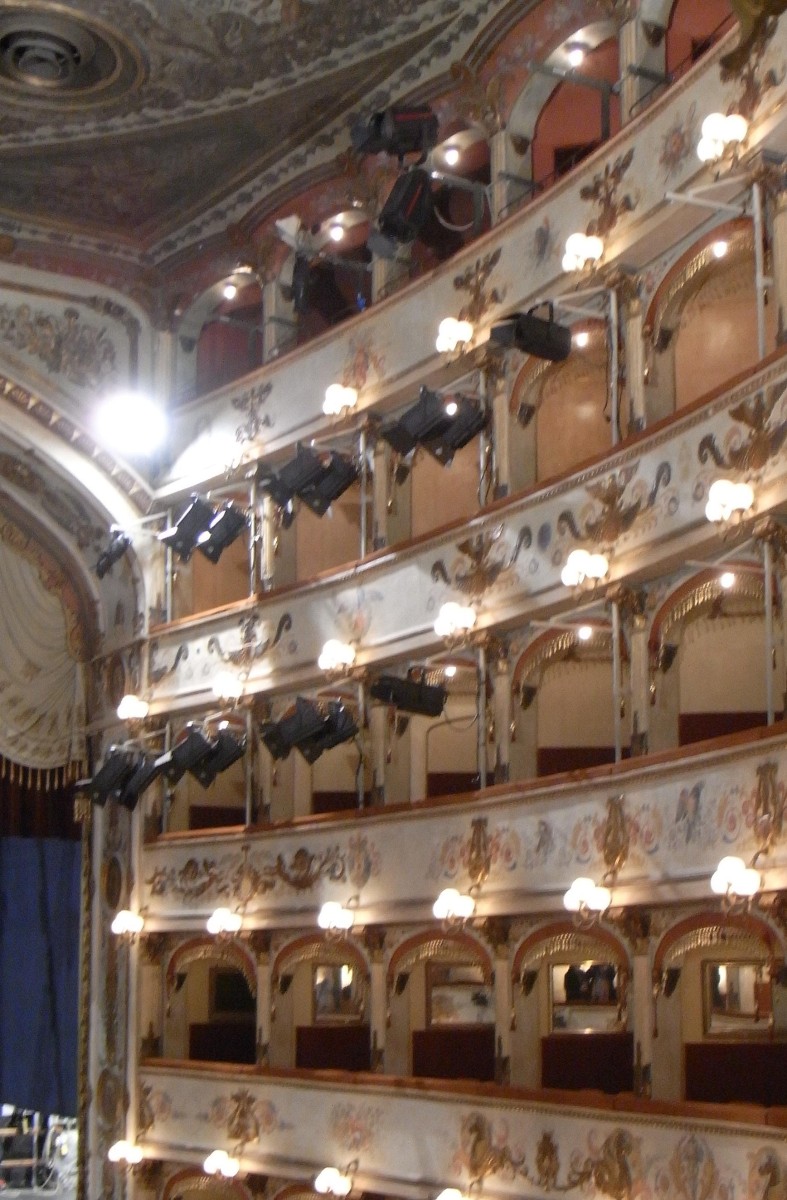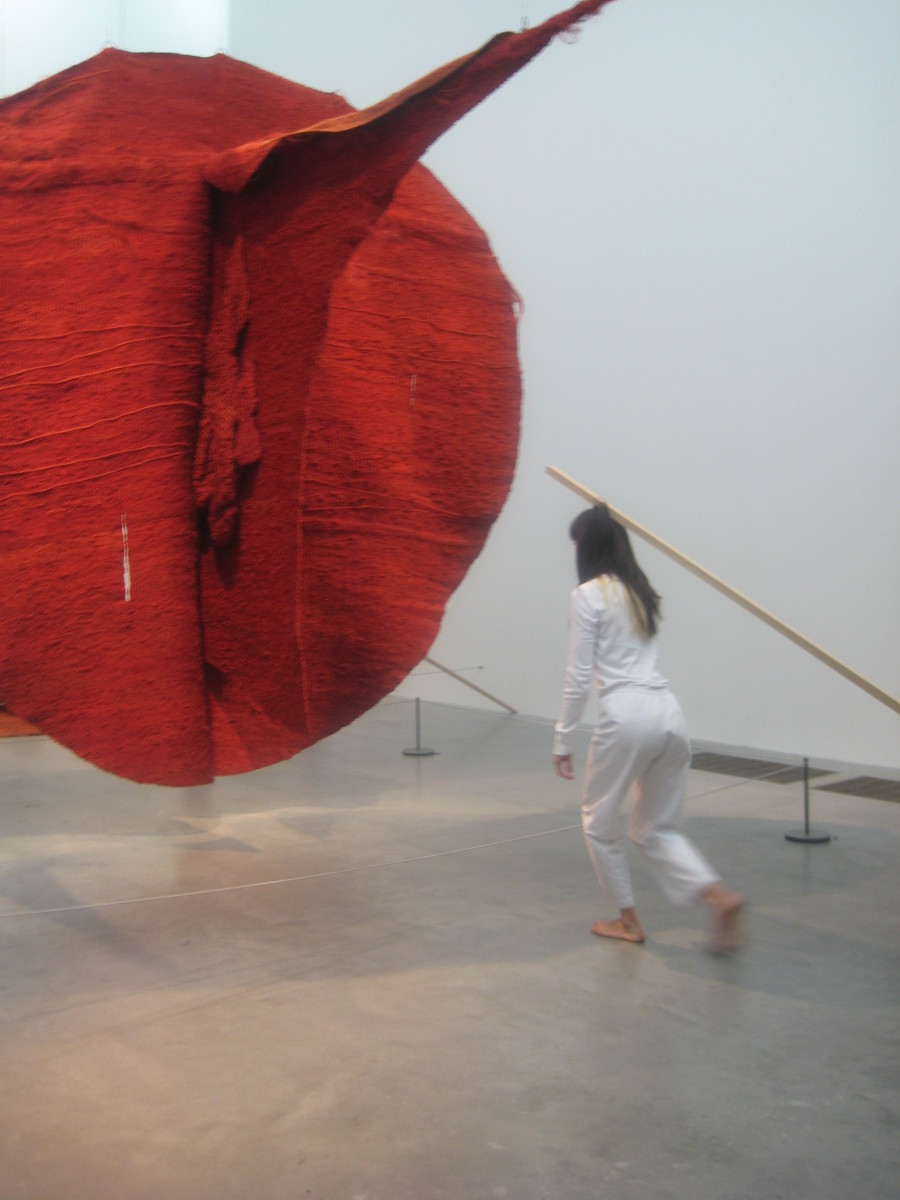In the very glamorous exhibition, Ballets Russes: the art of costume, currently showing until late March 2011 at the National Gallery of Australia in Canberra, one of the most discussed items is the tunic from the costume for the Blue God from the ballet of the same name—in its French form Le Dieu bleu.
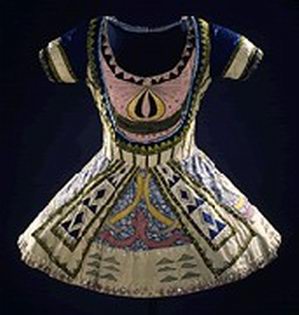
Its popular appeal rests largely on the fact that the tunic was worn by Vaslav Nijinsky, creator of the role of the Blue God and dancer and choreographer with Serge Diaghilev’s Ballets Russes. Not only was the costume worn by Nijinsky and as far as we know by no-one else, but traces of the make-up Nijinsky wore as the Blue God can still be found as marks on the inside the costume.
But we also know that the ballet was not a major success and was given very few performances after its 1912 premiere and quickly disappeared from the repertoire. That there were only a few performances of the ballet is both a blessing and a curse.
From a positive point of view it means that the costume, designed by Léon Bakst one of Diaghilev’s best known designers, is in excellent condition. While this situation reflects in part the exemplary conservation that has been carried out by the National Gallery’s conservation staff, it also reflects the fact that despite that the fact that the tunic is almost 100 years old it has not suffered from the wear and tear that constant use has on the fabric, decoration and stitching of dance costumes. Its excellent condition may also relate to the fact that it was made by two of the top Parisian costumiers of the time, M. Landoff and Marie Muelle. Madame Muelle in particular is known to have insisted that only the best quality fabrics be used and that decorative elements be appliquéd or embroidered rather than stencilled onto the fabric. She was also said to have had a secret metal thread that never tarnished.
A close-up look at the costume reveals that it encapsulates many of the principles that Bakst used throughout his design career, in particular a use of different textures in the one costume and daringly juxtaposed patterns and colours. He always made his interests, which included his understanding that dance was about movement, very clear in his designs on paper.
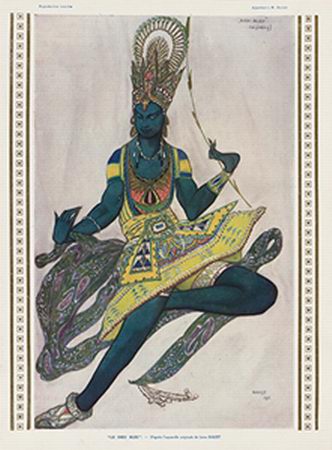
The costume is largely made from silk, satin, velvet ribbon, braid and embroidery thread, although set against the luxury silken fabrics are panels made from a simpler cotton or rayon material patterned with a floral, lotus-inspired design. The tunic’s dominant colours are pink, blue, gold and green and black and triangular and diamond patterns sit beside curves and half circles. Emerald green jewel-like sequins spill down strips of olive green braid.
Some parts of the tunic have been machine stitched. Others have been sewn by hand. The faux mother of pearl decorations along the hem of the tunic, for example, were hand sewn onto the fabric and the tacking stitches joining them together in a row can be seen where some of the decorations, now extremely fragile, have fallen off. The tunic has a row of metal fasteners, hooks and eyes, running right down the back—no zips, no Velcro in those days. Nijinsky would have simply held out his arms as the tunic was slipped on by his dresser, who would then have hooked him into the costume.
The Gallery’s collection also includes the gold headdress for the costume. It is equally as fascinating to study close up. Its double row of decorative points attached to a tight fitting skull cap is made of metallic gauze stitched by hand onto a wire frame with metallic thread—perhaps even with Mme Muelle’s untarnishable secret thread?
But in a more negative vein, because the work was performed on such a small number of occasions, what do we know about the choreography? Probably very little really. However, a number of historians have noted that Bakst and Michel Fokine, Le Dieu bleu‘s choreographer, had been deeply impressed by performances given in St Petersburg in 1900 by the dancers of the Royal Siamese Court and had incorporated choreographic and visual ideas from these performances into several Ballets Russes productions on which they worked, including Le Dieu bleu. Still photographs of Nijinsky show that static poses rather than a fluid and expressionistic form of movement may have been dominant, recalling the dance style of the Siamese dancers.
But another dance troupe from the other side of the world probably had just as much influence on the creation of Le Dieu bleu as did the dancers of the Royal Siamese Court. In 1906 the Royal Cambodian Ballet came to France for the Colonial Exhibition staged in Marseille, Cambodia being at that stage a protectorate of France. The Cambodians gave several performances in Paris in July of that year, just as Diaghilev was in Paris preparing for his major exhibition of Russian paintings, which was presented a little later that year at the Salon d’automne. It is hard to imagine that Diaghilev and his team would have been unaware of the Cambodians. They caused a sensation in Paris and had a major influence on a number of French artists, including the sculptor Auguste Rodin who followed the company to Marseille and executed a major series of drawings of the dancers. Many newspapers, including the Parisian daily Le Petit Journal and the influential Le Petit Parisien, carried news of and advertisements for the Cambodians and most carried drawings and posters of the dancers against a background of Cambodian temples.
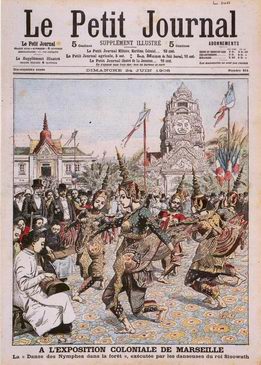
Bakst appears to have drawn on these printed sources for his backcloth, which features a huge rock face carved with faces of gods. It clearly recalls the posters in Parisian newspapers, which in turn recall the huge faces carved into the rock at the gateways to the Angkor Thom temple in Siem Reap, Cambodia.
Costumes for subsidiary characters in the ballet as held by the Victoria and Albert Museum and on display in their London exhibition, Diaghilev and the golden age of the Ballets Russes 1909–1929, confirm that Bakst was indeed influenced by the interest in Cambodia that was generated in 1906. In particular the costume for a Little God, illustrated on p. 79 of the Victoria and Albert Museum’s catalogue, shows a towering headdress with four god-like faces smiling beatifically out to the potential auditorium. The headdress looks totally unlike anything a Cambodian dancer would have worn (or currently wears). The faces look a little more like Western-style putti than anything else and one can’t help but wonder whether Bakst only ever saw the cover of French magazines of the time and never the dancers themselves. However, the Cambodian influence is clearly there.
But the tunic for the Blue God will always evoke the man who created the role and who caused so many scandals for the Ballets Russes of Serge Diaghilev, that is Vaslav Nijinsky. The power of his name, like that of Anna Pavlova, will always make anything associated with him appealing to a wide spectrum of the population. One of Nijinsky’s colleagues, the ballerina Lydia Sokolova, has described in her memoirs the first sight the audience would have had of Nijinsky as the Blue God. She writes that he was seen ‘at the top of a flight of wide steps at the back of the stage, seated on a throne with legs crossed, holding a flower’. He was wearing the tunic now on display in Ballets Russes: the art of costume.
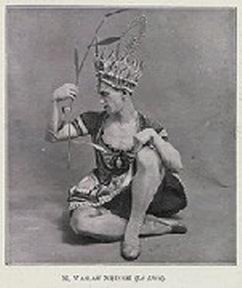
© Michelle Potter, 27 December 2010
This post is an amplified and enhanced version of my article ‘Homage to the Blue God’ first published by The Canberra Times on 18 December 2010.
The website for the National Gallery’s exhibition is at this link.
BIBLIOGRAPHY
- Bell, Robert (ed.). Ballets Russes: the art of costume (Canberra: National Gallery of Australia 2010)
- Buckle, Richard (ed). Dancing for Diaghilev. The memoirs of Lydia Sokolova. Paperback edition (San Francisco: Mercury House, 1989)
- Misler, Nicoletta. ‘Siamese dancing and the Ballets Russes’ in Nancy van Norman Baer (ed.), The art of enchantment: the Ballets Russes 1909–1929 (San Francisco: Fine Arts Museums of San Francisco, 1988), pp. 78–83
- Musée Rodin. Rodin and the Cambodian dancers: his final passion (Paris: Editions du Musée Rodin, 2006)
- Pritchard, Jane (ed.). Diaghilev and the golden age of the Ballets Russes 1909–1929 (V & A Publishing, 2010)
Comments on this post are now closed. The discussion continues on part two.
